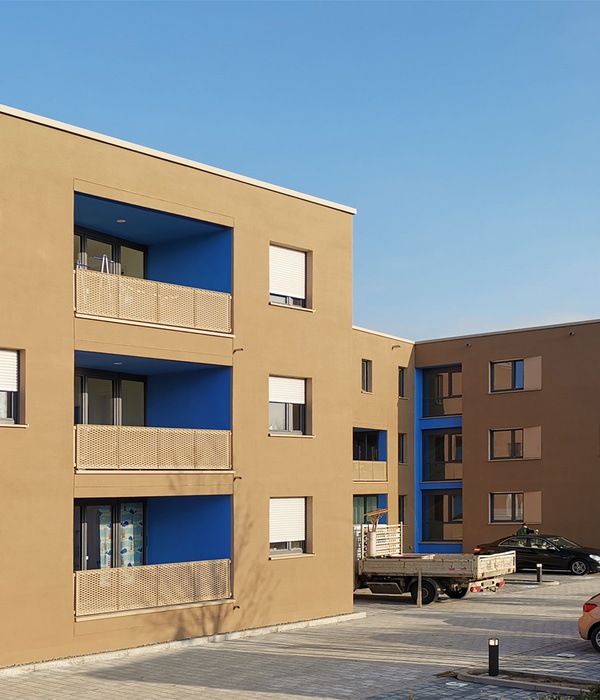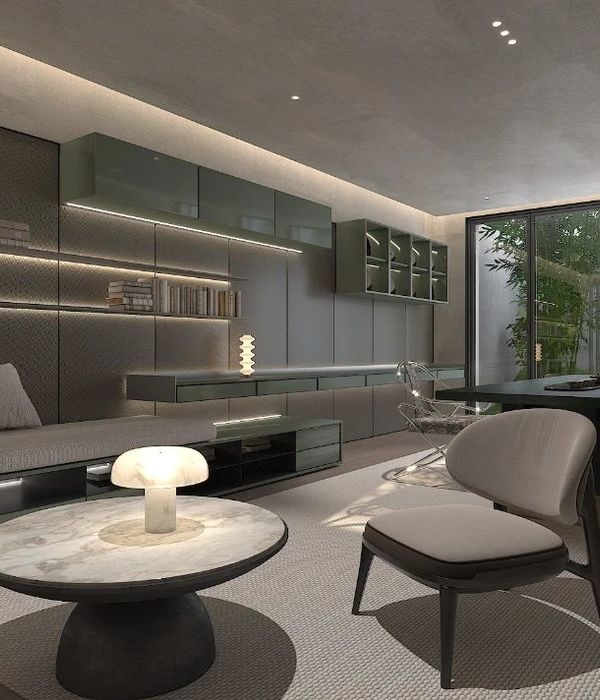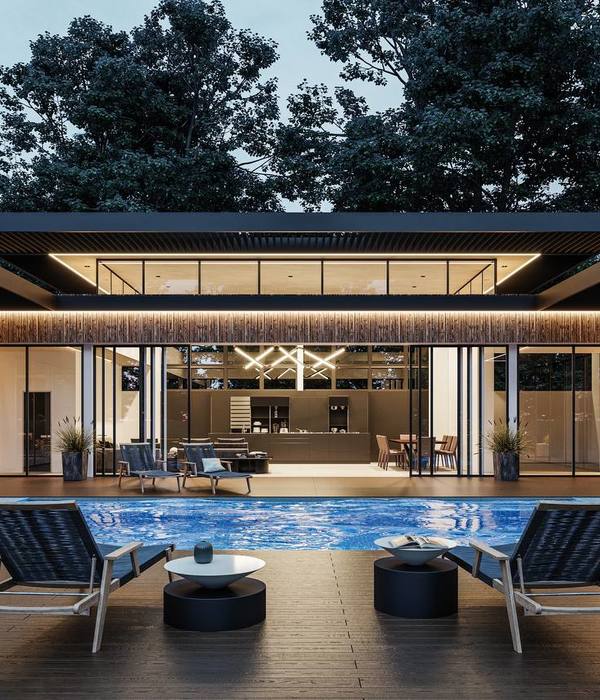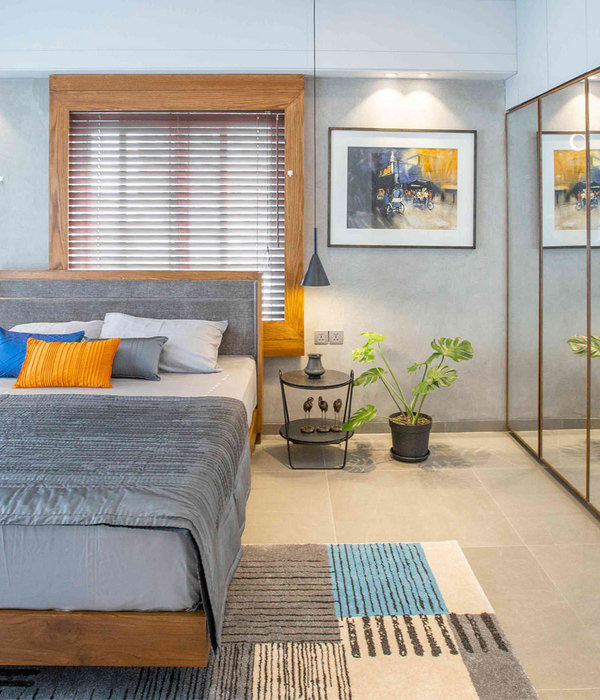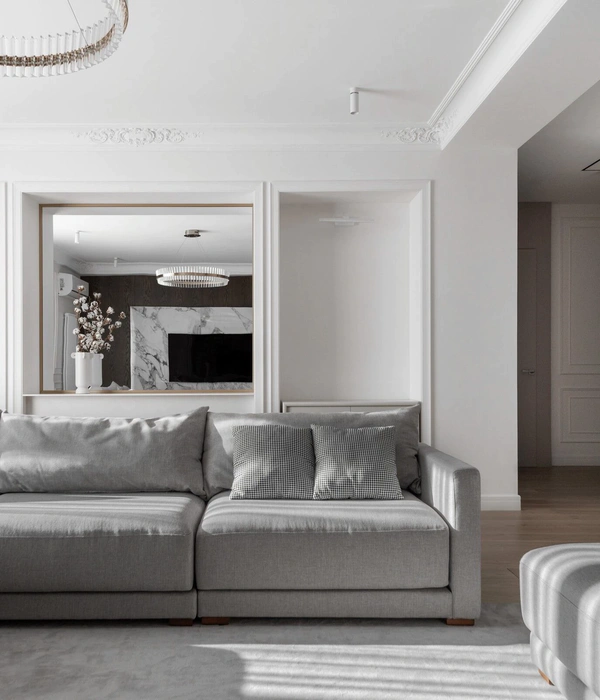VTN建筑师位于沿海城市厦门中心附近的一个森林遗址上,选择了他们的标志性材料-竹子,创造了一个灵活的室内空间,能够举办各种活动。
Located on a forested site near the center of the coastal city of Xiamen, VTN Architects selected their signature material, bamboo, to create a flexible interior space capable of hosting a variety of events.
Interior rendering. Image Courtesy of VTN Architects
内部渲染VTN建筑师的形象礼貌
竹亭由14根竹柱组成,间隔8米,支撑着一个14米宽的屋顶,屋顶横跨两边屋檐的边缘。随着柱子的升起,竹扇向四个方向戏剧性地展开,给人的印象是,竹子的内部已经从厚厚的块状中掏空出来了。
The bamboo pavilion is constructed from 14 bamboo columns spaced 8 meters apart and supporting a 14 meter wide roof spanning the edge of the eaves on either side. As the columns rise, the bamboo fans out dramatically in four directions, creating the impression that the interiors have been hollowed out from a thick mass.
建筑师们解释道:“门式房的最高高度为6.4米,允许自然光线渗入室内,并为这间充满活力的房间提供了令人愉快的氛围。”“柔和弯曲的室内造型让人们体验到层次分明的框架结构,这进一步提高了用户对空间深度的感知。”
“The gabled roof, which has a maximum height of 6.4m, allows natural light to permeate inside and provides a pleasant atmosphere to this dynamic room,” explain the architects. “The gently curved interior form lets people experience the layered frame structures, which further the user perception of the depth of the space.”
Day View rendering. Image Courtesy of VTN Architects
日视图渲染。VTN建筑师的形象礼貌
Day View rendering. Image Courtesy of VTN Architects
日视图渲染。VTN建筑师的形象礼貌
在公共区域的后面,一个三角形的砖砌房屋,有房屋的功能,如洗手间、厨房、工作人员和仓库等。这个第二亭设计紧凑,完全坐在竹亭屋檐下,让主结构进入中心舞台。
Behind the public area, a triangular shaped brick building houses back of house functions such as the restrooms, kitchen, staff room and storage. This second pavilion is compactly designed, sit ting completely beneath the eaves of the bamboo pavilion to allow the main structure to take center stage.
在VTN的许多竹子项目中,室内都是对元素开放的,但是对于亭溪馆来说,空间需要空调。这需要建筑师提供一个独特的解决方案:在柱子和墙壁之间安装符合结构竹自然弯曲的拱形玻璃板。毛毯和隔墙由竹子、橡胶片和茅草装饰组成,把玻璃和柱子连接起来,使建筑物完全密封。
In many of VTN’s bamboo projects, interiors are left open to the elements, but for the Ting Xi pavilion, the space was required to be air-conditioned. This demanded a unique solution from the architects: the installation of arch-shaped glass panels between the columns and walls that matched the natural curving of the structural bamboo. Mullions and partitions composed of bamboo, rubber sheets and a thatch finish connect the glass to the columns, allowing the building to be completely airtight.
Construction in progress. Image Courtesy of VTN Architects
正在施工。VTN建筑师的形象礼貌
Construction in progress. Image Courtesy of VTN Architects
正在施工。VTN建筑师的形象礼貌
Construction in progress. Image Courtesy of VTN Architects
正在施工。VTN建筑师的形象礼貌
该项目中使用的竹子采用可持续的越南传统技术进行处理,以自然提高材料的质量和耐久性。该地区的白话砖被选作房屋展馆的后座,使建筑在其背景下和谐地坐着。
The bamboo used in the project has been treated with a sustainable traditional Vietnamese technique to naturally improve the quality and durability of the material. Vernacular bricks from the region were selected for the back of house pavilion, allowing the building the sit harmoniously within its context.
亭溪竹亭的建设目前已接近完成,预计将于2017年底实现。
Construction on the Ting Xi Bamboo Pavilion is currently nearing completion, with realization expected by the end of 2017.
VTN建筑师新闻
News via VTN Architects
Floor Plan. Image Courtesy of VTN Architects
楼层图。VTN建筑师的形象礼貌
建筑师VTN建筑师位于厦门,福建,中国首席建筑师Vo Trong Nghia项目建筑师Hidetoshi Sawa,Le Phuong Uyen,Nguyen Van Thien客户厦门君浩房地产开发有限公司竹协和VTN建筑师(Vo Trong Nghia Architect)工地面积1150平方米,面积480.0平方米
{{item.text_origin}}

